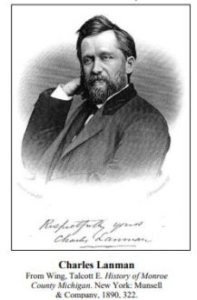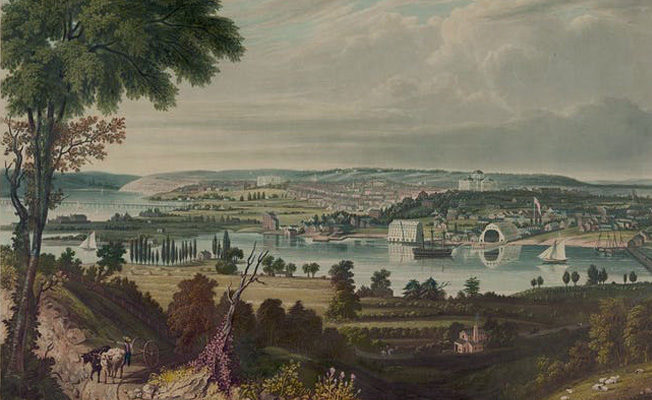Time sleeps and his scythe is broken for those who live in this house.
— Armistead Peter 3rd, last private owner of Tudor Place
Washington, DC –The house and garden at Tudor Place suggest a timelessness that is only partly accurate. As an estate, it’s survived more than two centuries and served six generations of one family. As a public museum, though, it’s an up-and-comer, an adolescent on a growth spurt with admired and award-winning education, collections, and research programs. Loyal support from members and donors since its 1988 opening has advanced the museum’s mission of bringing people closer to their own stories and the American story.
Unlike most historic houses, Tudor Place presents not one specific era or topic, but six generations of public and private life, indoors and out, from the agricultural era to the Cold War. No head count can be found for the museum’s inaugural house tour, on October 8, 1988. What can be known is that the site, which in its first three years combined served just 25,000 visitors, now hosts almost that many every year. Of 400,000 counted since 1988, more than a quarter, 121,820, visited since 2013. They include more than 3,000 pre-K-through-high school students annually.
When the museum was new, “the typical visitor was a Washingtonian,” often from the neighborhood, said Elizabeth Taylor, a former economist who delivered the museum’s first tour and still serves as a docent. Today, the museum attracts visitors from across and beyond the United States, as well. In 2017, TripAdvisor listed Tudor Place among the top 100 Things to Do in Washington (number 72 at press time), a rare accolade for a small site among more than 500 competing listings.
In addition to guided tours, a full calendar of public programs gives locals and members more reasons to visit and to return. The museum is known for innovative education and public programs for all ages, supported by a cohort of roughly 50 docents and garden and program volunteers. Its field trip modules meet standards of learning in several disciplines for both one-time visits and year-long partnerships. community favorites like Eggstravaganza, the Earth Day plant sale and picnic, and Tudor Nights themed evenings rank alongside meaty staples like Landmark Society lectures, weekly enrichment programs for tots, and garden programs from guided tours to botanical art classes. The annual spring garden party, first hosted by the Peters in the 1960s, is now a staple of Washington’s social season and the museum’s largest single fundraiser.
Tudor Place enters its third century with a Master Preservation Plan to ensure the future of collections and archive and foster sustainability in building landscape management. The museum has made great strides in 30 years to assess its collection and archive and plan for their future maintenance. When the museum opened, the collection was only partially plumbed; surprises and unlabeled treasures lay in boxes and unopened trunks stacked in closets, back rooms, and attics. More than 200,000 archival items and 15,000 objects now have been assessed, catalogued, and formally accessioned, as have thousands of trees, shrubs, and plants across the five-and-a-half-acre site, enriching interpretation and the visitor experience.
The staff increasingly extends interpretation off-site, as well, through lectures around the region and staff appearances on C-Span and other media. The publication in 2016 of “Tudor Place: America’s Story Lives Here, in collaboration with the White House Historical Association, also broadens access to the treasures housed here.
###
ABOUT TUDOR PLACE: America’s story lives here! Having celebrated its 2016 Bicentennial, Tudor Place is one of the nation’s finest and best preserved neoclassical estates, built by Martha Washington’s granddaughter and lived in by six generations of her family. Through landscape, architecture, and collections, it tells the story of a family and their young nation, showcasing American design, labor, politics, and technology from the agricultural to the digital age. The William Thornton-designed historic house features furnishings, art, and domestic artifacts collected and used by a family and their enslaved workers and servants over 200 years. In the 5½-acre garden, dotted among varied garden “rooms” and landscape features, visitors will find a 1919 Pierce-Arrow motorcar and the District’s oldest exhibited smoke house. House tours are offered hourly, Tuesday through Sunday.
 New discoveries are common at Tudor Place. Whether found in the back of a drawer, the bottom of a trunk, beneath the ground, or amid a box of family papers, encounters with “new” objects and information fuel the imagination and reveal fresh stories about the past. Tudor Place Archivist Wendy Kail’s 2019 discovery of an unattributed manuscript launched an inquiry that combined her skills as a historian, researcher, and sleuth to reveal the author of the work, as well as details of his life and a curious connection to Tudor Place.
New discoveries are common at Tudor Place. Whether found in the back of a drawer, the bottom of a trunk, beneath the ground, or amid a box of family papers, encounters with “new” objects and information fuel the imagination and reveal fresh stories about the past. Tudor Place Archivist Wendy Kail’s 2019 discovery of an unattributed manuscript launched an inquiry that combined her skills as a historian, researcher, and sleuth to reveal the author of the work, as well as details of his life and a curious connection to Tudor Place.










